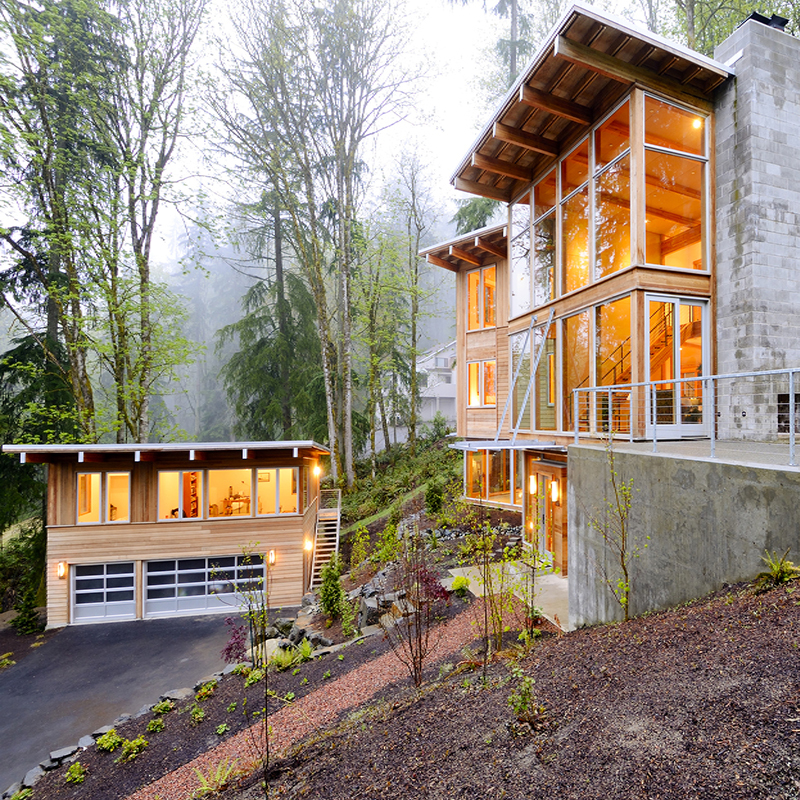
Here at NJ HOME, our job is to show you interesting ways to upgrade your interior and exterior spaces, both through inspiring home designs and through tips and tricks from local experts. For instance, homeowners who are thinking about expanding their livable areas—or pondering ways to use an open area in their yard—can consider adding an accessory dwelling unit (ADU) to their property.
You may have heard of ADUs referred to by their other more colloquial names, like in-law apartments, granny flats or simply a guest house. By definition, ADUs are standalone structures outside the main living quarters that are either detached from a single-family home or attached to it with one common wall. They’ve been especially popular since working from home became more widespread during the pandemic, and are currently having a moment in high-growth areas due to the housing shortages across many dense states in the U.S.
There are a few things you’ll need to consider before adding an ADU to your New Jersey property. You’ll want to:
Know your town’s rules and regulations.
New Jersey doesn’t yet have a law in place that has legalized ADUs statewide. However, a recent survey conducted by the Regional Plan Association, which is working to make ADUs a reality in our state, found that 65 percent of New Jerseyans supported legalizing these units—and State Legislature has begun to take action, the same site reports. The first bill, S345 sponsored by Senator Troy Singleton in Burlington County, would legalize ADUs statewide and was passed by the Senate Community and Urban Affairs Committee, so progress is being made.
In the meantime, ADUs are legal at the town level. Princeton is the first municipality in the tri-state area that not only permits the construction of ADUs, but also allows them to be sold separately from the main home, according to The New York Times. In March, Montclair put its ADU ordinance into effect. Other municipalities such as Maplewood have specific ADU restrictions, such as that an ADU is permitted but not on properties designated as historic by the town’s Historic Preservation Commission. East Orange and Bradley Beach, for example, also have ADU restrictions regarding occupancy limitations, entrance placement and parking rules. If you’re not sure where your town stands on the matter, check with your municipality’s zoning code enforcer.
Determine the purpose of your ADU.
ADUs have a plethora of benefits; it’s best to decide what you’ll personally use it for before you start building. A few financial pros of an ADU: It increases your home’s square footage, thus upping the market value of your property. It can also serve as an additional source of income should you decide to rent out the ADU long-term or list it on sites such as Airbnb.
From a practicality standpoint, an ADU also helps multi-generational families live together, since it’s a great alternative to nursing homes or assisted living homes for aging parents or in-laws. It can also be a cohabitating space for young adults who aren’t yet ready to move out of their parents’ home.
One thing to keep in mind though is that they’re not called dwelling units for nothing; legally, someone must be able to reside in the ADU, which means you’ll be required to install heating, a bedroom, a full bathroom and a small kitchen with a stove and refrigerator. (Yes, even if you just plan to use your unit as a home office or gym).
Budget for its construction.
As with any home design project, pricing varies widely, but the average cost of an ADU in 2023 is between $100,000 and $300,000. Much of that cost goes toward the construction and the materials, as well as plumbing costs for the kitchen and bathroom.
You can pay for your ADU with a home equity loan, a Home Equity Line of Credit (HELOC), a construction loan, cash-out refinance or a credit card (learn more about each of these options HERE).
Calculate your tax and insurance costs.
There’s no official tax ruling in New Jersey on ADUs yet because they’re not legalized statewide. But in California, where ADUs are permitted, property tax rates on ADUs are in the range of 1-1.5 percent of the build cost, according to SnapADU. For example, if it costs about $100,000 to build your ADU, you’ll pay an additional $1,000 in taxes for that year.
As far as insurance policies go, any ADU that’s attached to or a part of your home should be added to your homeowner’s insurance policy (though you’re not legally obligated to do so). Simply tell your insurance broker about your ADU, and they can provide information on how the pricing of your home insurance will be affected.
Once you have all of the above straightened out, you can get to the fun stuff, such as hiring an architect, contractor and designer to help you bring your ADU dreams to life. Good luck!
Looking for design ideas and inspiration? Check out the spring issue of NJ HOME, out now!